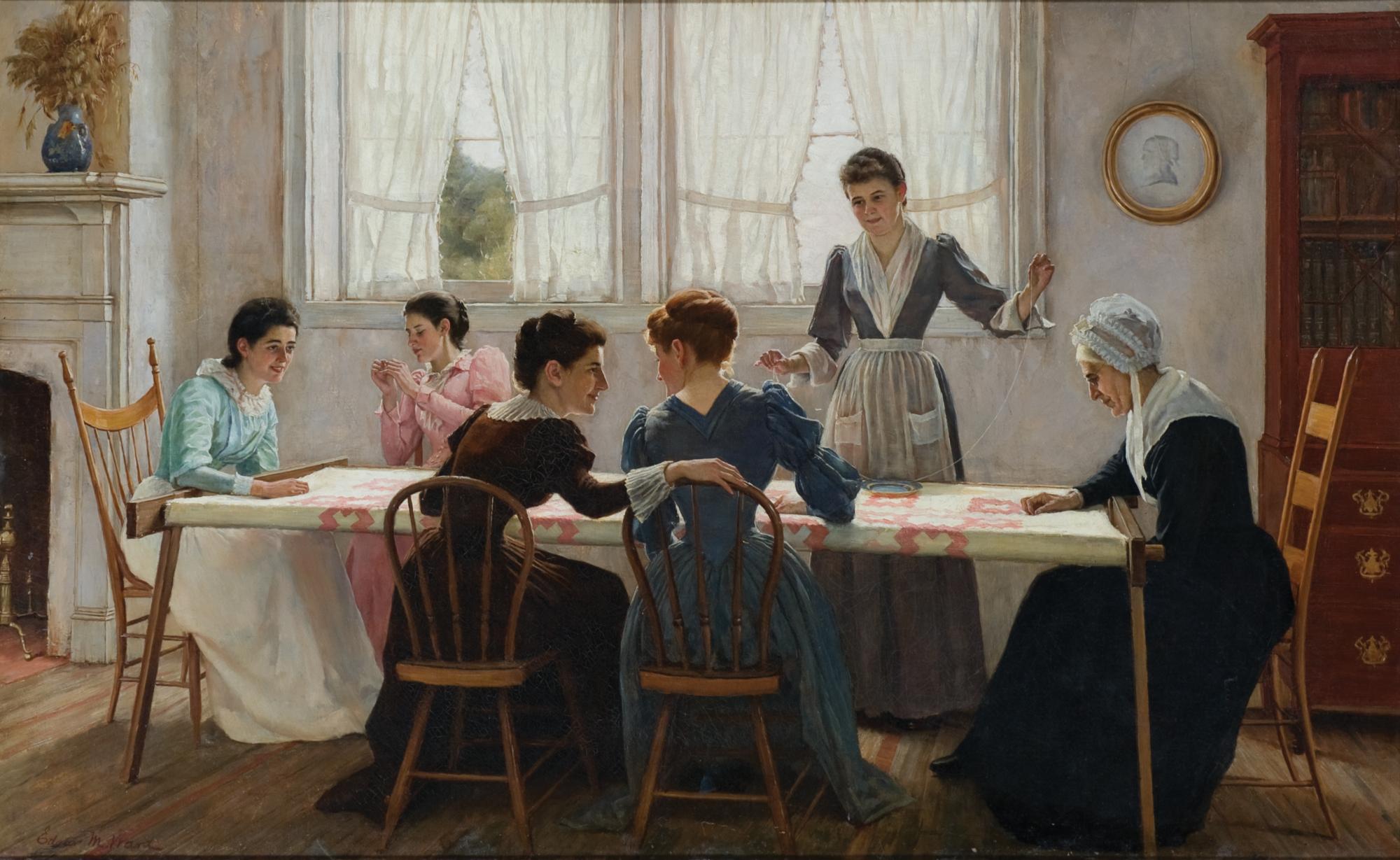
Perfecting the Past
Dec. 7, 2012-Sept. 1, 2013
Colonial Revival Quilts

As the United States evolved into a modern, industrialized, and urbanized society in the late 1800s, Americans gazed with nostalgia toward the pre-industrial colonial era. For many Americans, the colonial era was the nation’s Golden Age, a period that experienced the fullest flowering of distinctive American culture and virtues. “Colonial” was defined loosely, encompassing anything pre-Victorian (pre-1840). Americans romanticized the past, imagining it held a simpler way of life and a more perfect society.
The Colonial Revival movement peaked during the years between 1880 and 1940. From white-columned porches to quilt patterns named after Martha Washington, Americans found the past endlessly inspirational for shaping their domestic interiors, architecture, and tastes.
Not surprisingly, the Colonial Revival sparked renewed interest in making “old-tyme” quilts. Quiltmaking allowed Americans to participate in a needle art supposedly practiced by their ancestors and, thus, to re-enact history itself.
The quilts in Perfecting the Past have been organized into five groups to show their diverse inspirations from the past. They demonstrate how designers, magazine publishers, and quiltmakers perfected the past by adapting it to reflect their modern sensibilities and identification with American values. The results are uniquely American-styled Colonial Revival quilts